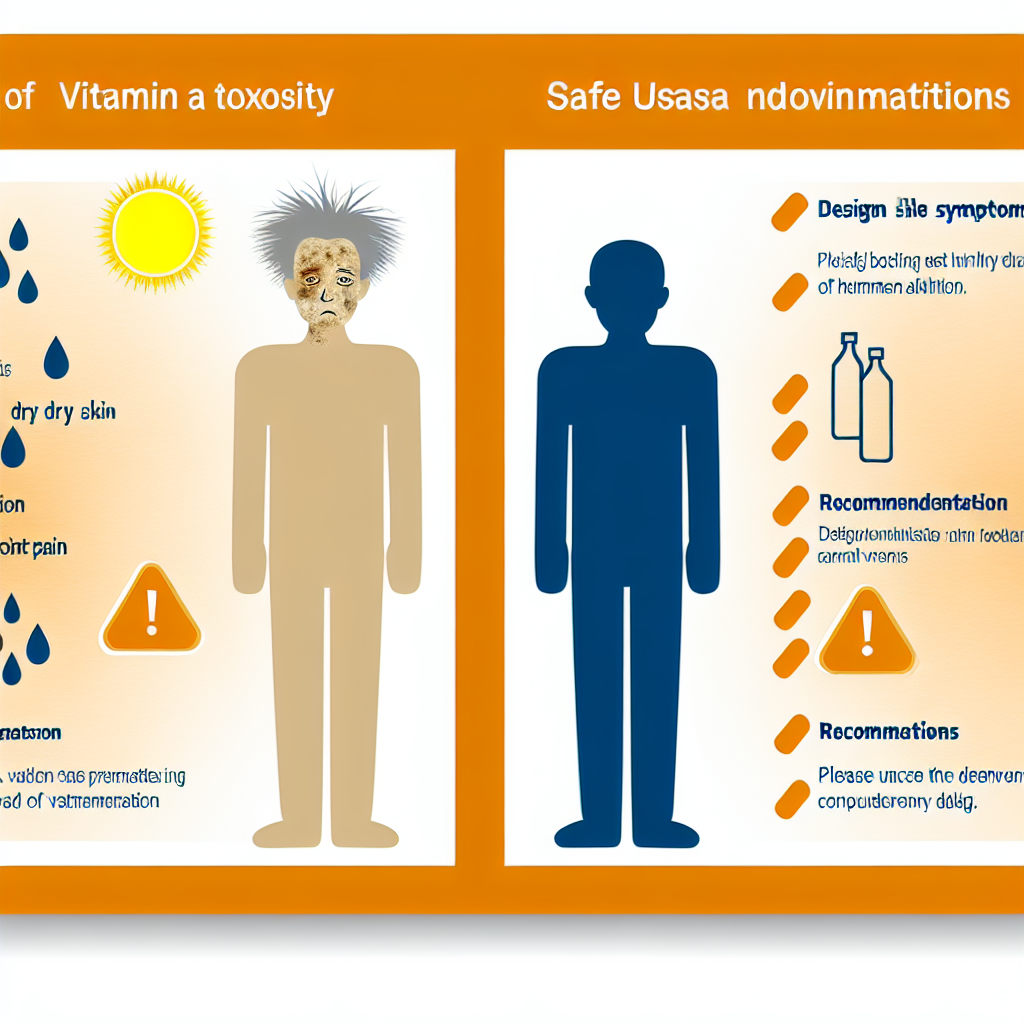Did you know that too much of a good thing can be harmful—especially when it comes to vitamins? Vitamin A, essential for maintaining vision, preventing infections, and supporting overall health, can turn dangerous if consumed in excessive amounts. Overuse of supplements, fortified foods, or vitamin-rich diets can lead to Hypervitaminosis A, commonly known as Vitamin A toxicity, a condition that affects multiple areas of the body.
This article will guide you through the symptoms of Vitamin A toxicity, explain its causes, and provide practical prevention tips. Whether you're exploring this topic out of curiosity or concern for your health, these insights will help you make informed choices about your vitamin A intake and overall nutrition.
What Is Vitamin A Toxicity?
Vitamin A toxicity occurs when the body accumulates excessive levels of vitamin A, particularly its preformed form found in supplements and animal-based foods like liver. Unlike water-soluble vitamins, vitamin A is stored in the liver and fat tissues, making it harder for the body to eliminate when consumed in excess. While getting enough vitamin A is crucial for vision, immunity, and healthy skin, too much can lead to harmful side effects.
The condition is categorized as either acute (short-term overdose) or chronic (long-term exposure) toxicity, each with its own set of symptoms. Knowing how this condition arises can help you prevent it before serious complications occur.
Symptoms of Vitamin A Toxicity
Recognizing the symptoms of Vitamin A toxicity is a critical step in managing and reversing the condition. Symptoms may vary depending on the extent of overconsumption and whether the toxicity is acute or chronic.
Acute Vitamin A Toxicity Symptoms
Acute toxicity occurs after consuming a large dose of vitamin A within a short period, usually through supplements or fortified products. Common symptoms include:
- Nausea and vomiting
- Dizziness or vertigo
- Severe, throbbing headaches
- Blurred vision
- Abdominal pain
Acute cases are immediate but often reversible once excess intake is stopped.
Chronic Vitamin A Toxicity Symptoms
Chronic toxicity develops gradually over time due to sustained high intake of vitamin A. Here are signs to look out for:
- Dry, flaky skin often resistant to typical remedies
- Bone pain or tenderness, mimicking joint-related conditions
- Hair thinning or hair loss
- Unexplained weight loss despite normal eating habits
- Fatigue, irritability, or changes in mood
- Blurred or double vision
- Liver dysfunction, which may initially go unnoticed
These signs may overlap with other health conditions, making it important to seek medical advice if they persist after reducing vitamin A intake.
Severe Symptoms
In extreme cases, excess vitamin A can lead to:
- Intracranial pressure (causing severe headaches, nausea, or confusion)
- Organ damage, especially liver failure
- Non-healing fractures due to weakened bones
- Coma or life-threatening health complications
Key Risk Factors for Vitamin A Toxicity
While vitamin A toxicity can affect anyone, certain factors heighten the risk. Below are the most common contributors to Hypervitaminosis A:
Overuse of Supplements and Fortified Foods
Most cases of toxicity stem from using high-dose vitamin A supplements or consuming multiple vitamin-enriched foods. Many people unknowingly exceed the recommended daily intake, assuming more vitamins equate to better health.
Vulnerable Groups
Some populations are particularly prone to Vitamin A toxicity:
- Children: Their smaller bodies are more sensitive to overdoses.
- Pregnant women: Excessive intake can increase the risk of birth defects.
- People with liver conditions: Liver dysfunction reduces the body’s ability to store and process vitamin A safely.
Limited Diet Diversity
A reliance on high-vitamin A foods, like liver, without balancing other nutrients may increase the likelihood of toxicity.
Diagnosing Vitamin A Toxicity
Diagnosing vitamin A toxicity requires a thorough evaluation by a healthcare provider. Typical steps include:
- Medical History Review: Understanding your diet, supplement intake, and symptoms.
- Blood Testing: Measuring retinol levels to confirm toxicity.
- Physical Examination: Checking for dry skin, brittle hair, or bone tenderness.
- Imaging Tests: Rarely used, but helpful in severe cases to assess damage to the liver or bones.
Treating and Managing Vitamin A Toxicity
The first step in treating toxicity is simple: stop consuming excessive vitamin A. Depending on the severity of symptoms, additional treatment may include:
Acute Cases
- Hydration therapy: Resolves nausea or dizziness.
- Symptom-specific management: Pain relief for headaches or abdominal discomfort.
Chronic Cases
- Liver health monitoring: With medical supervision.
- Nutritional planning: Rebalancing the diet to avoid high-dose vitamin A foods.
- Bone-strengthening regimens: If fractures or tenderness are present.
Preventing Vitamin A Toxicity
Avoiding toxicity starts with moderation. Try these practical tips for safe vitamin A consumption:
- Follow Recommended Daily Allowances: Adults should aim for 700–900 mcg daily.
- Avoid High-Dose Supplements: Stick to balanced multivitamins unless prescribed by a doctor.
- Focus on Dietary Diversity: Eat a variety of fruits, vegetables, lean proteins, and healthy fats.
- Consult Healthcare Professionals: Especially if pregnant or managing chronic illness.
Conclusion
Vitamin A is essential to maintaining good health, but balance is key. Taking excessive amounts can lead to Vitamin A toxicity, with symptoms ranging from dry skin to severe health complications. Using the prevention strategies outlined here, you can enjoy the benefits of vitamin A without risking its dangers.
If you ever suspect signs of toxicity, consult a healthcare provider promptly. Prevention and early intervention go a long way in protecting your health.
